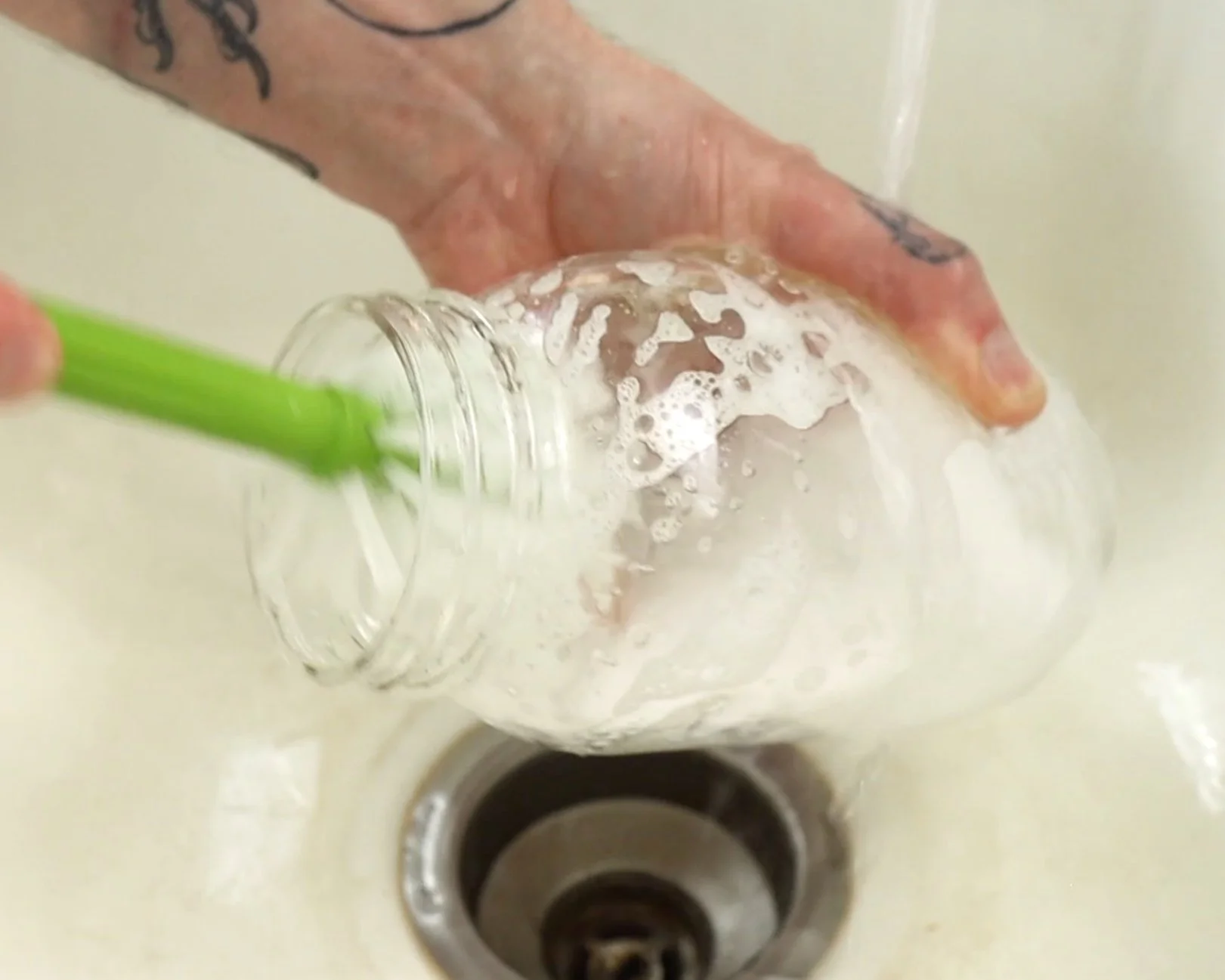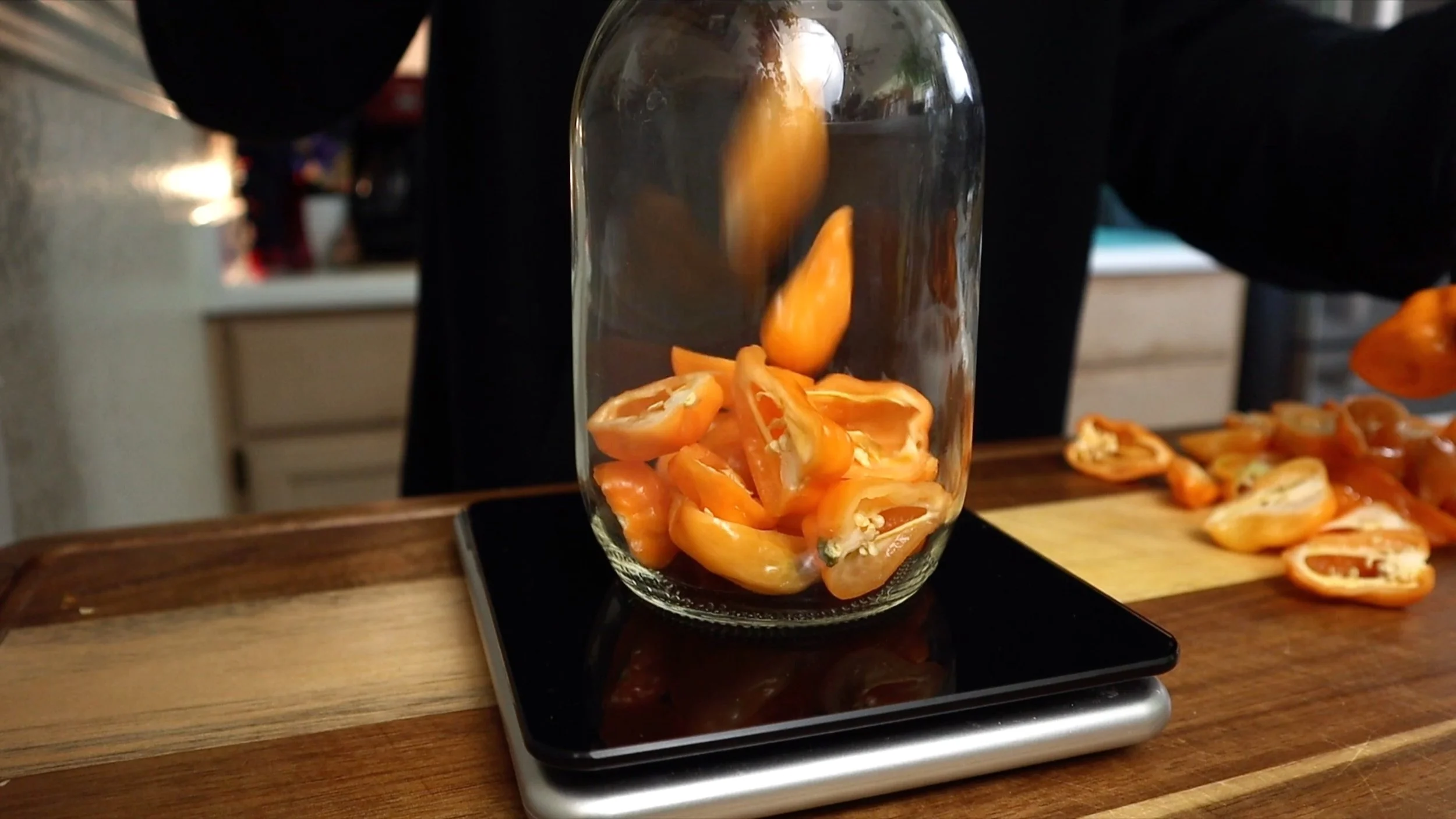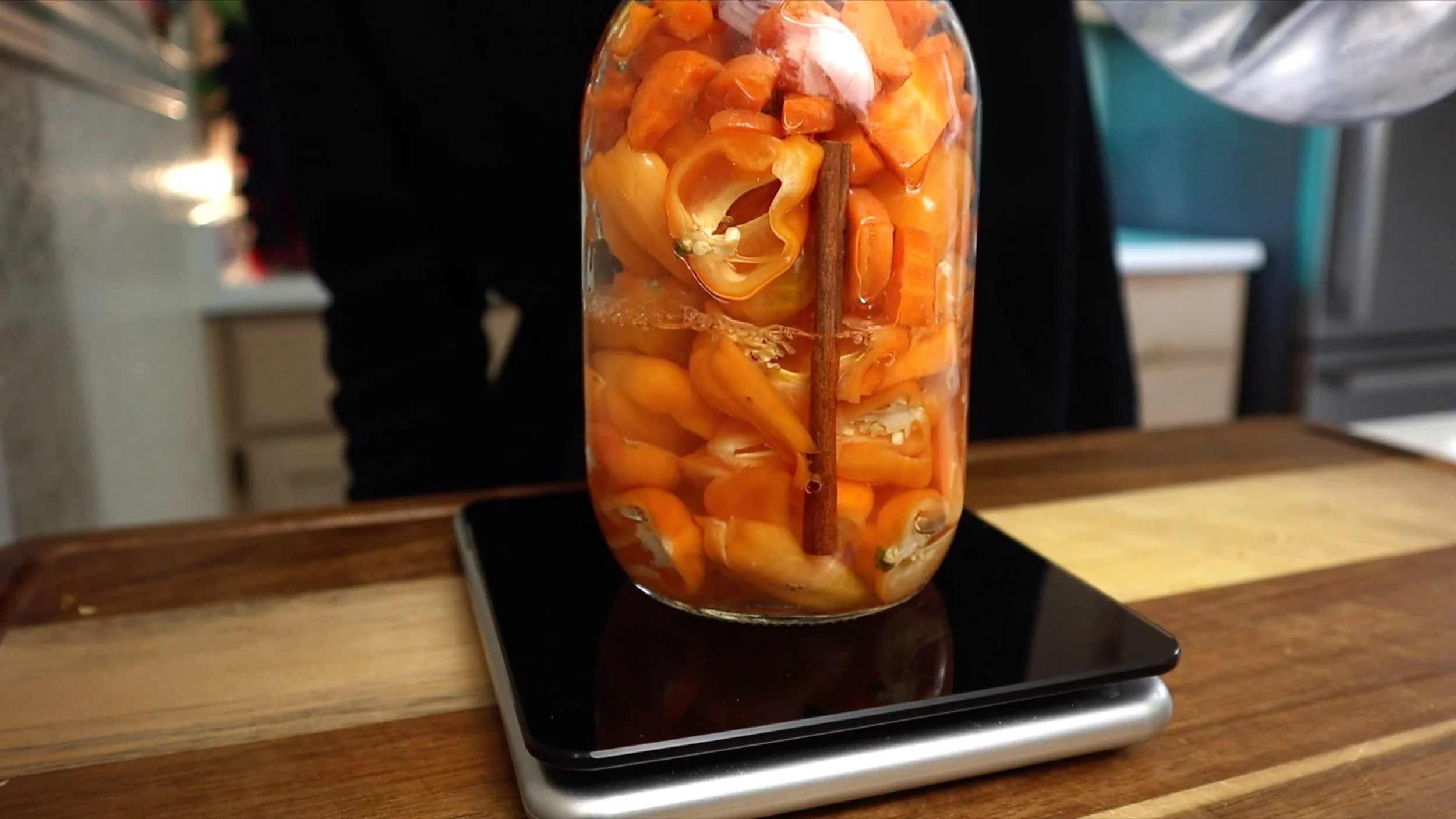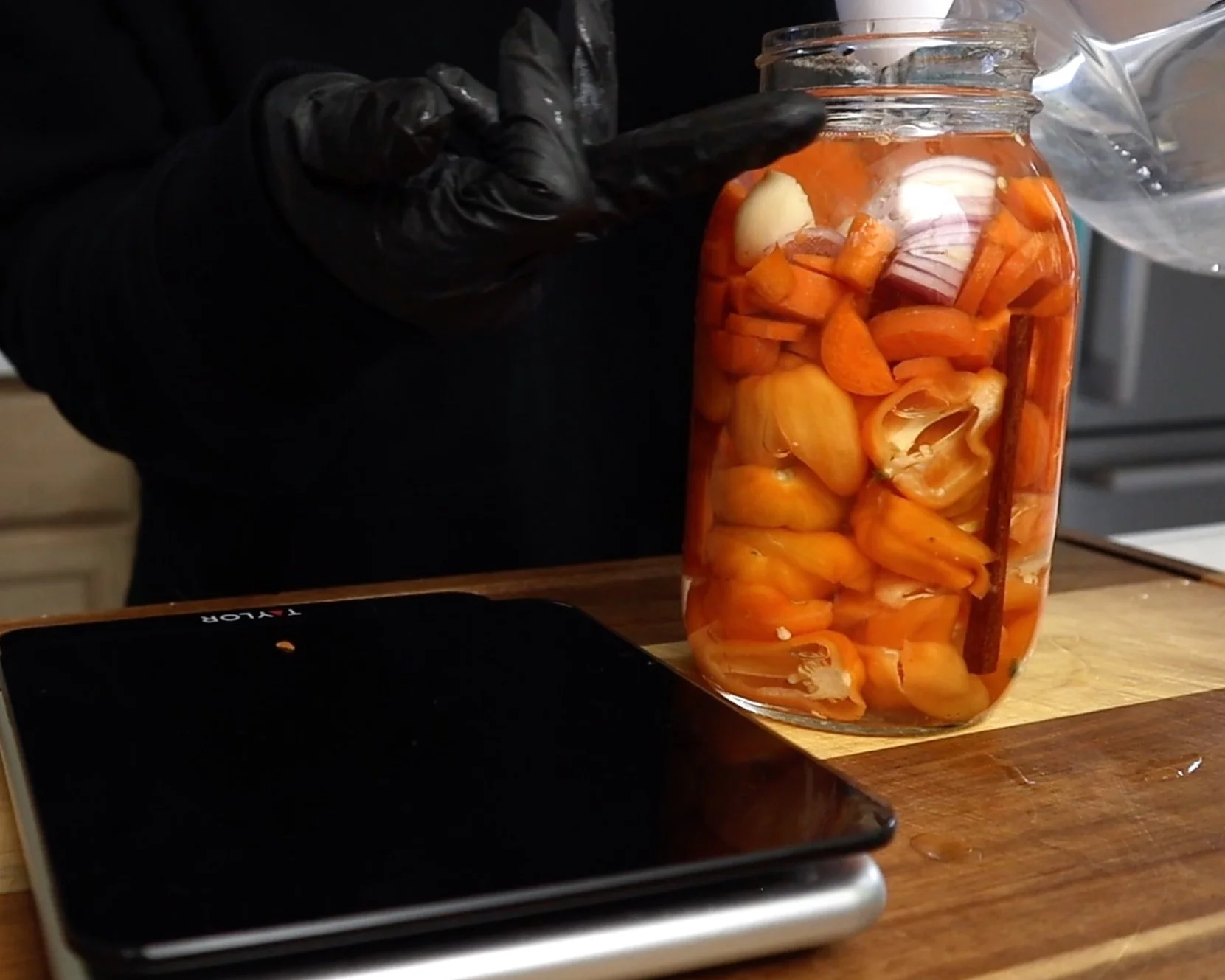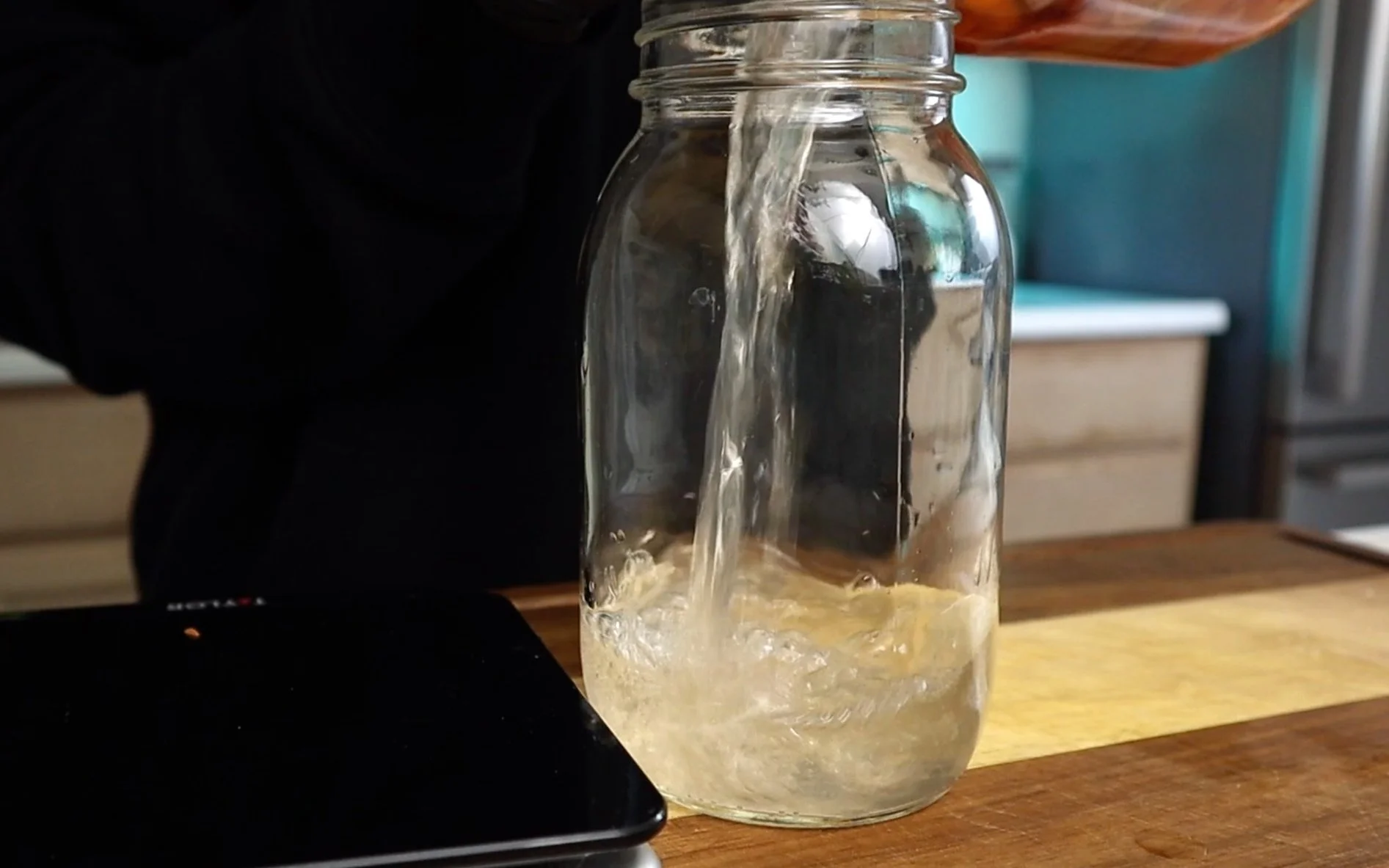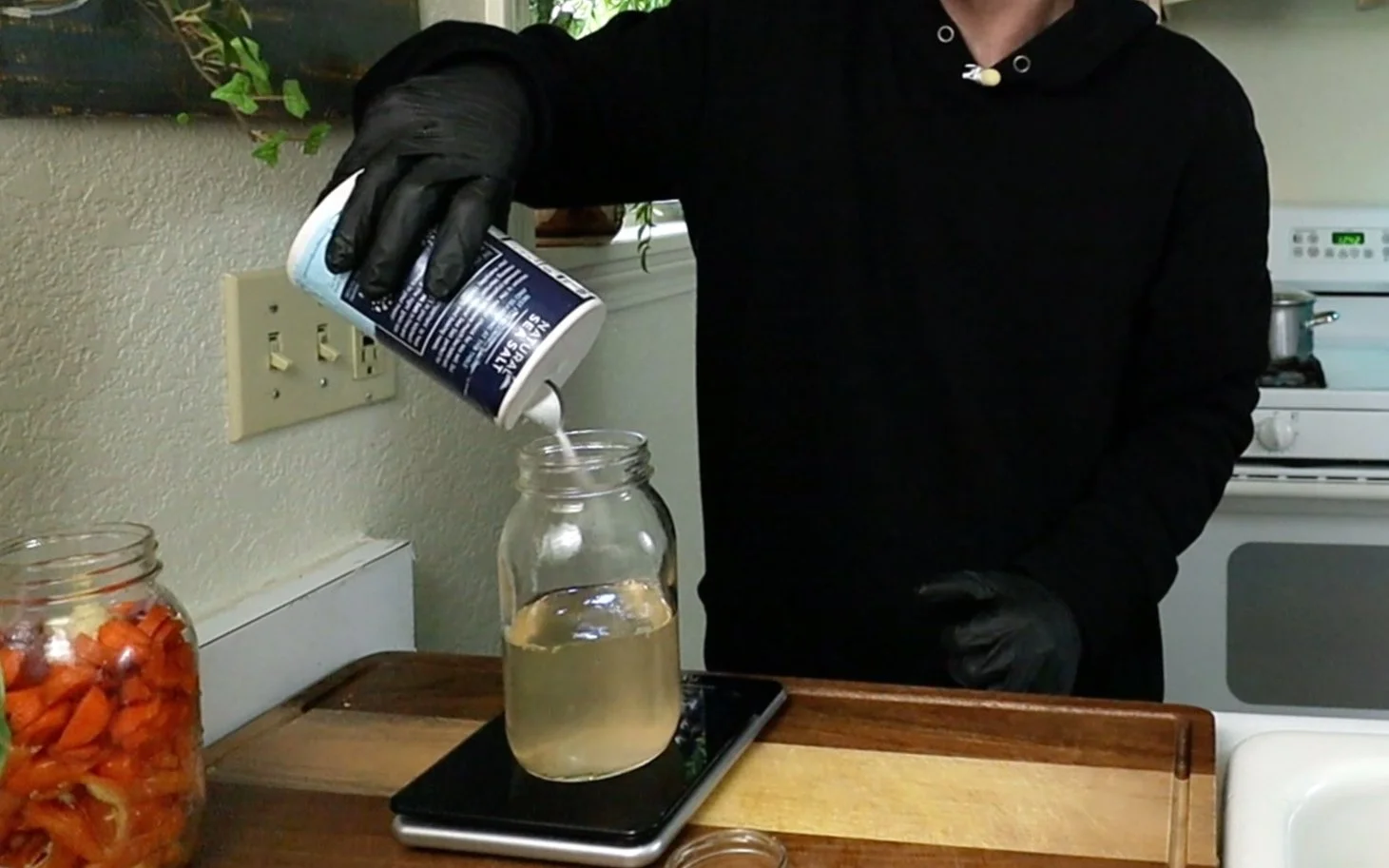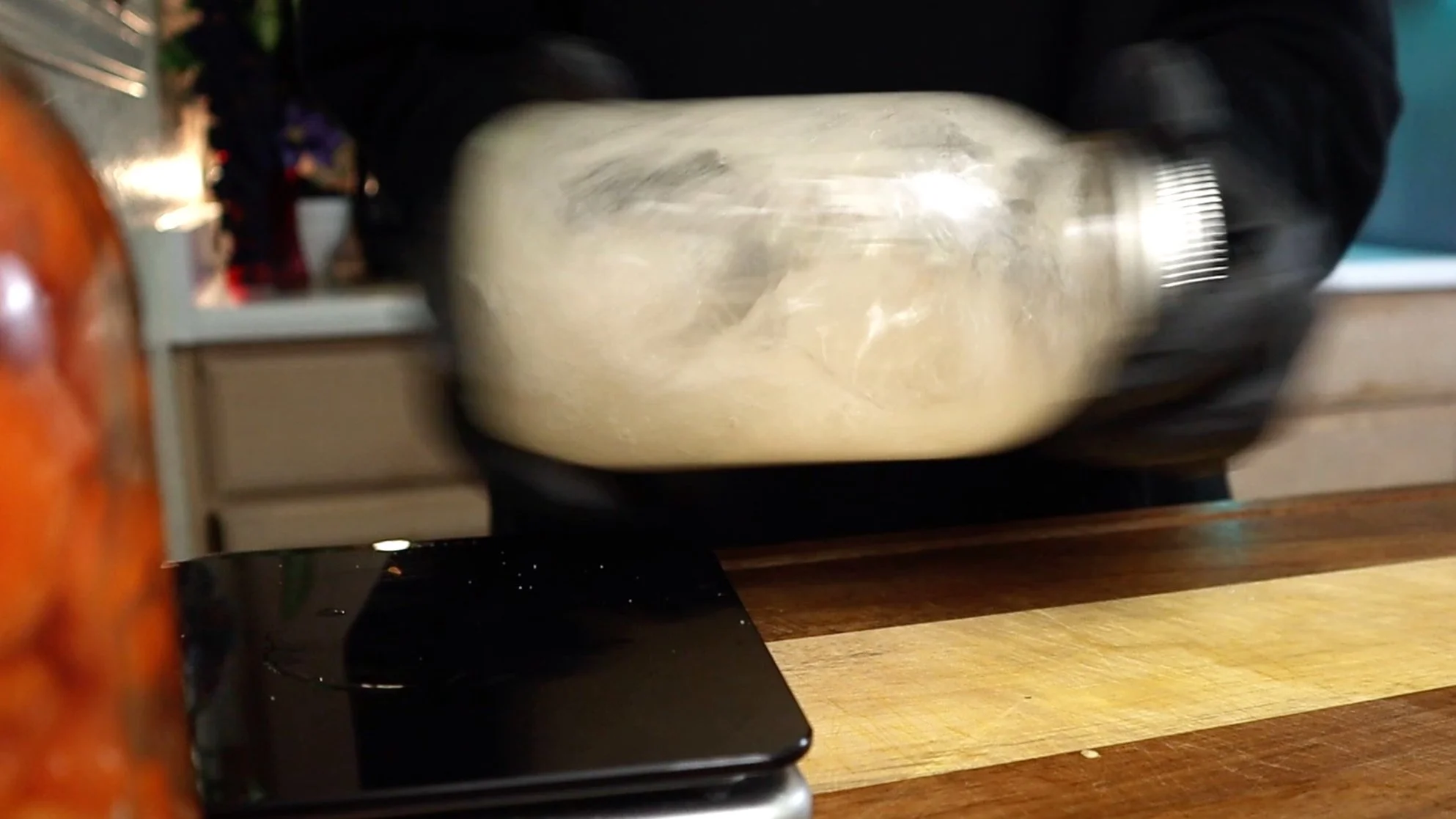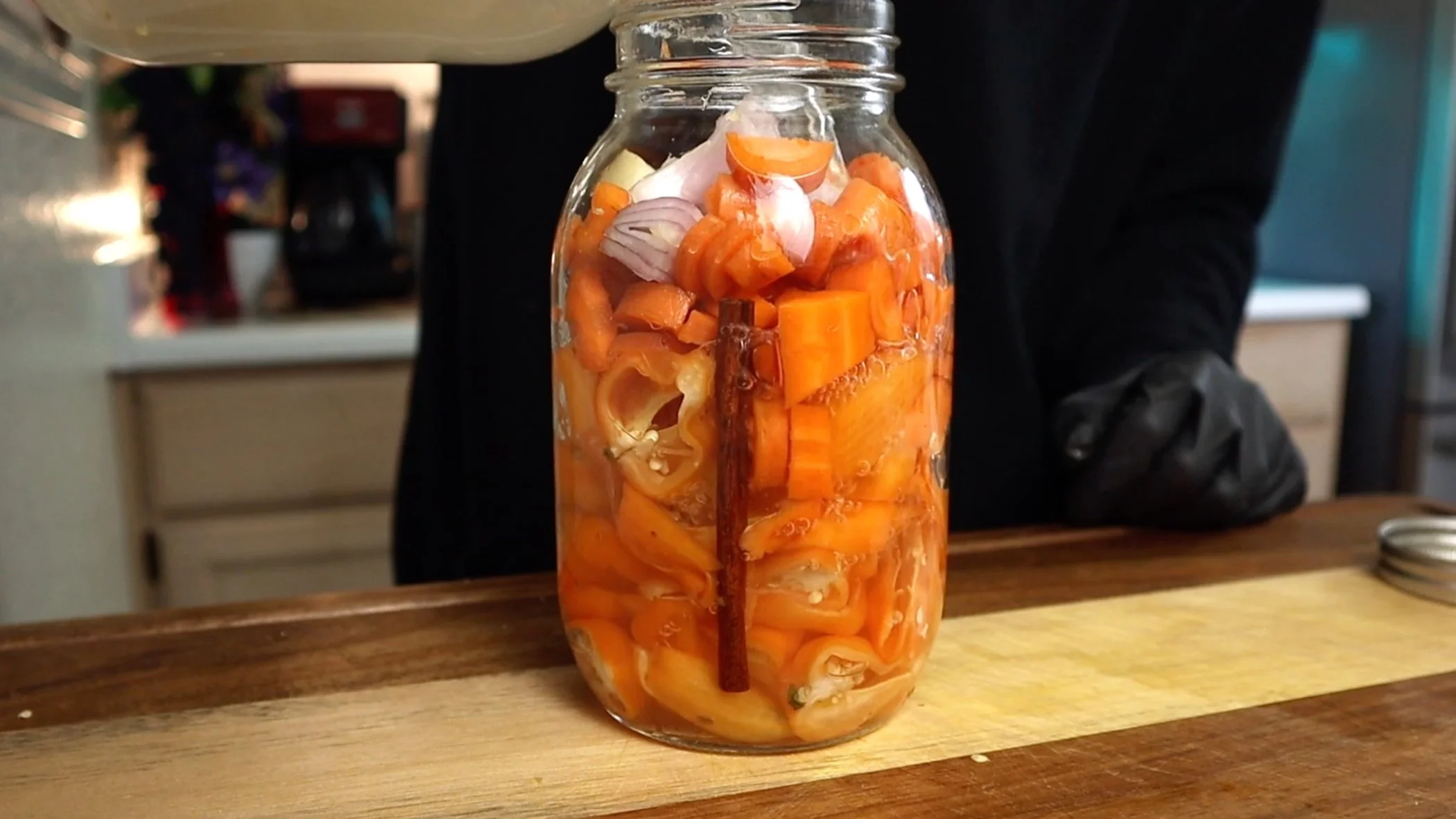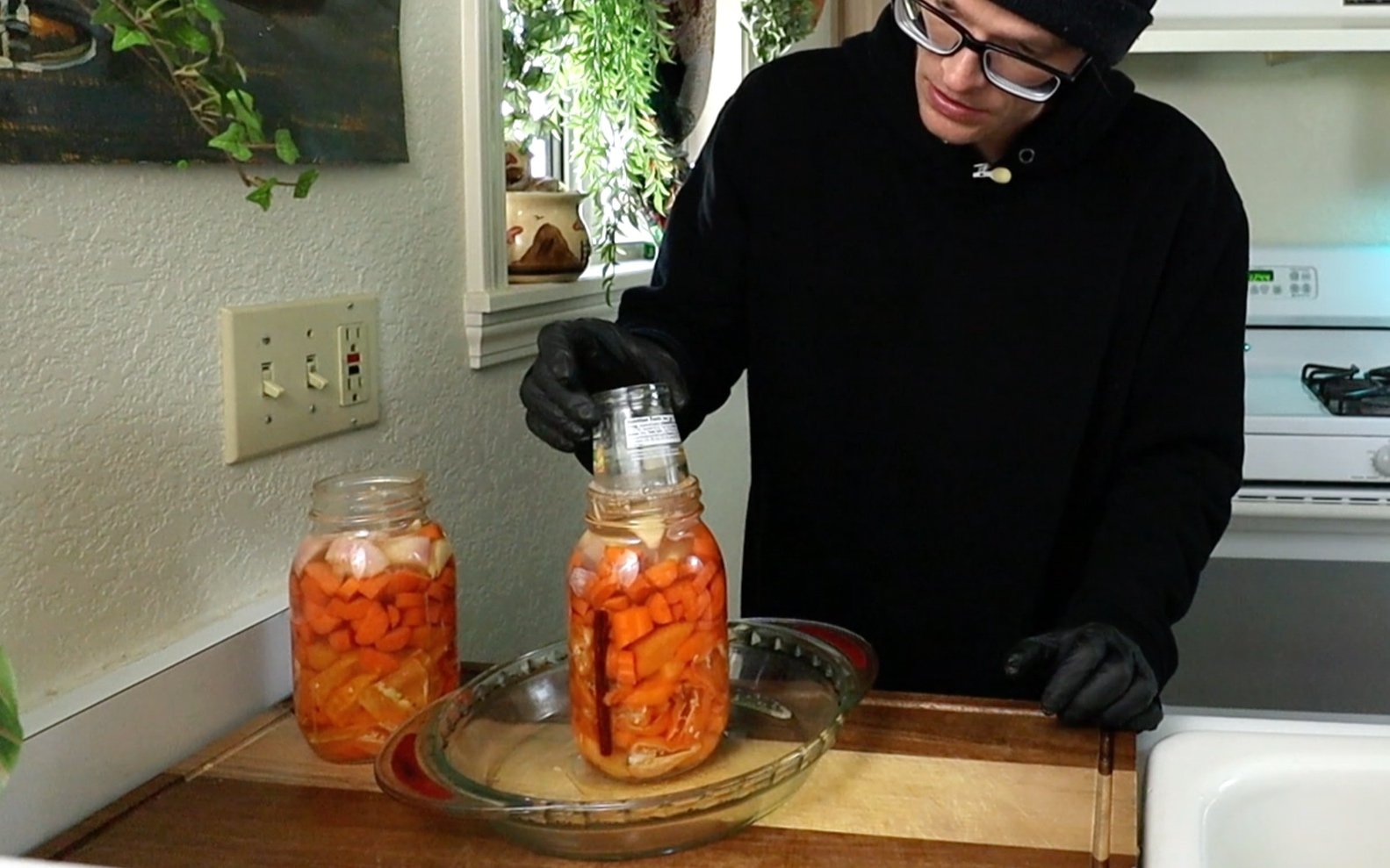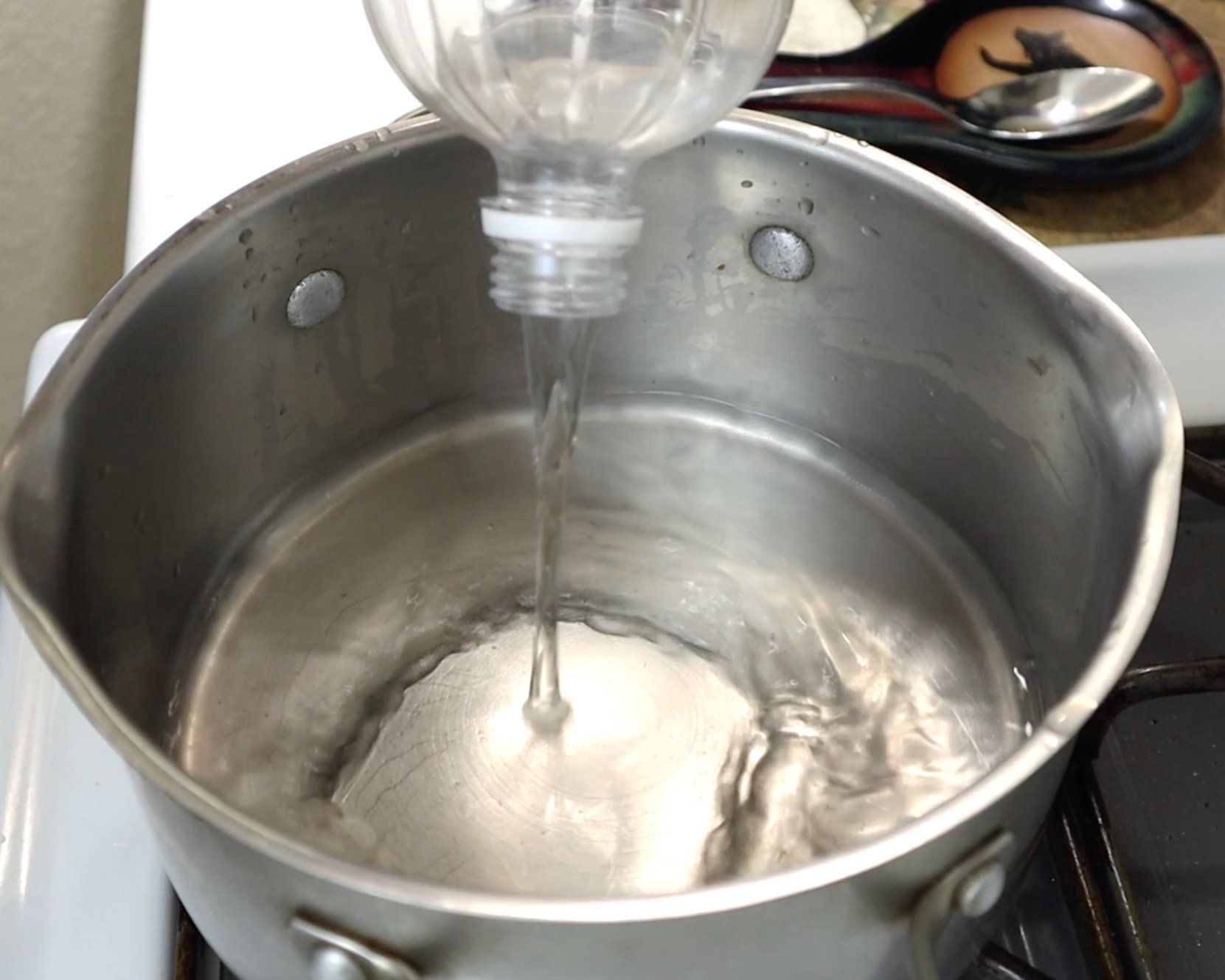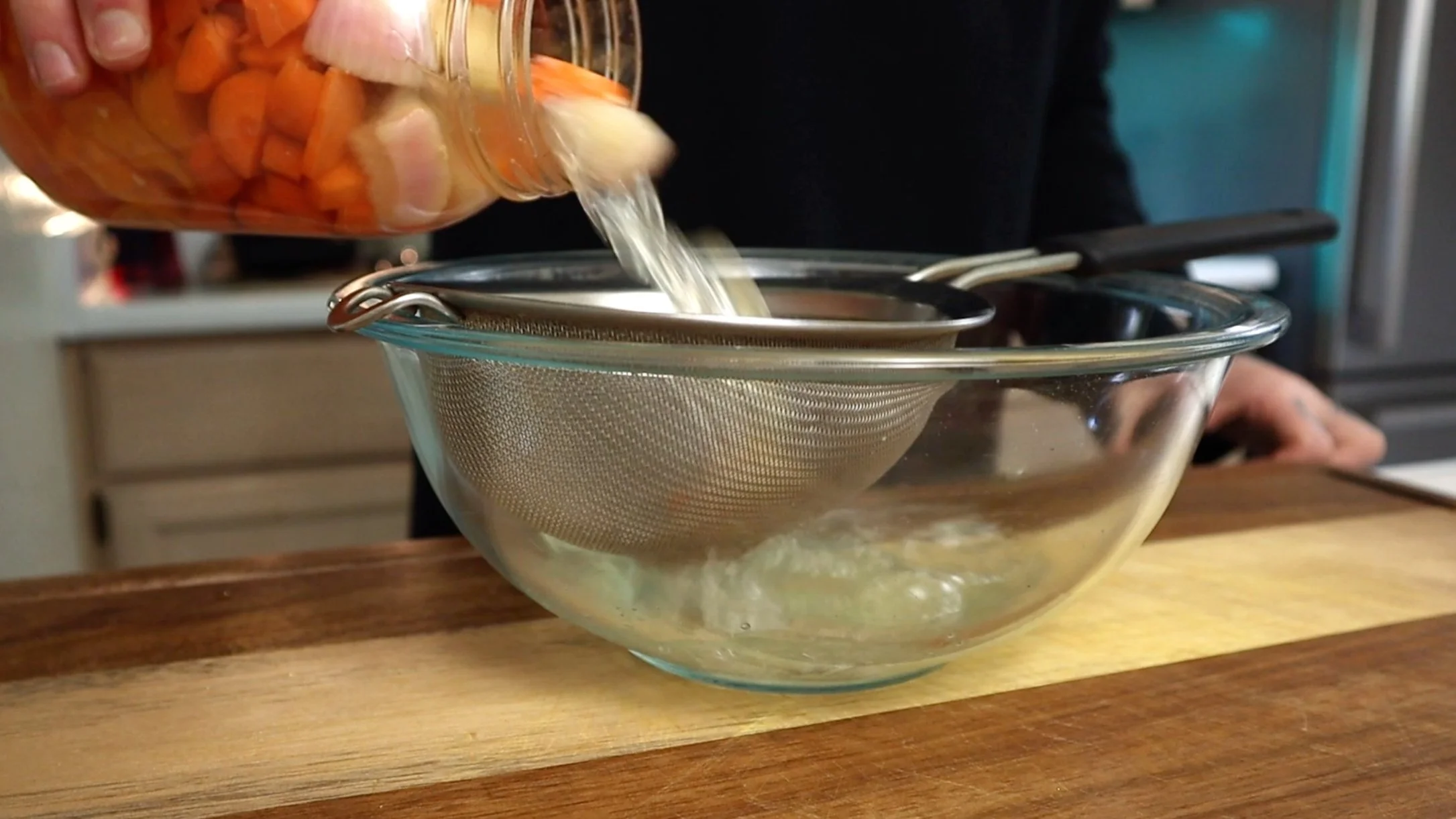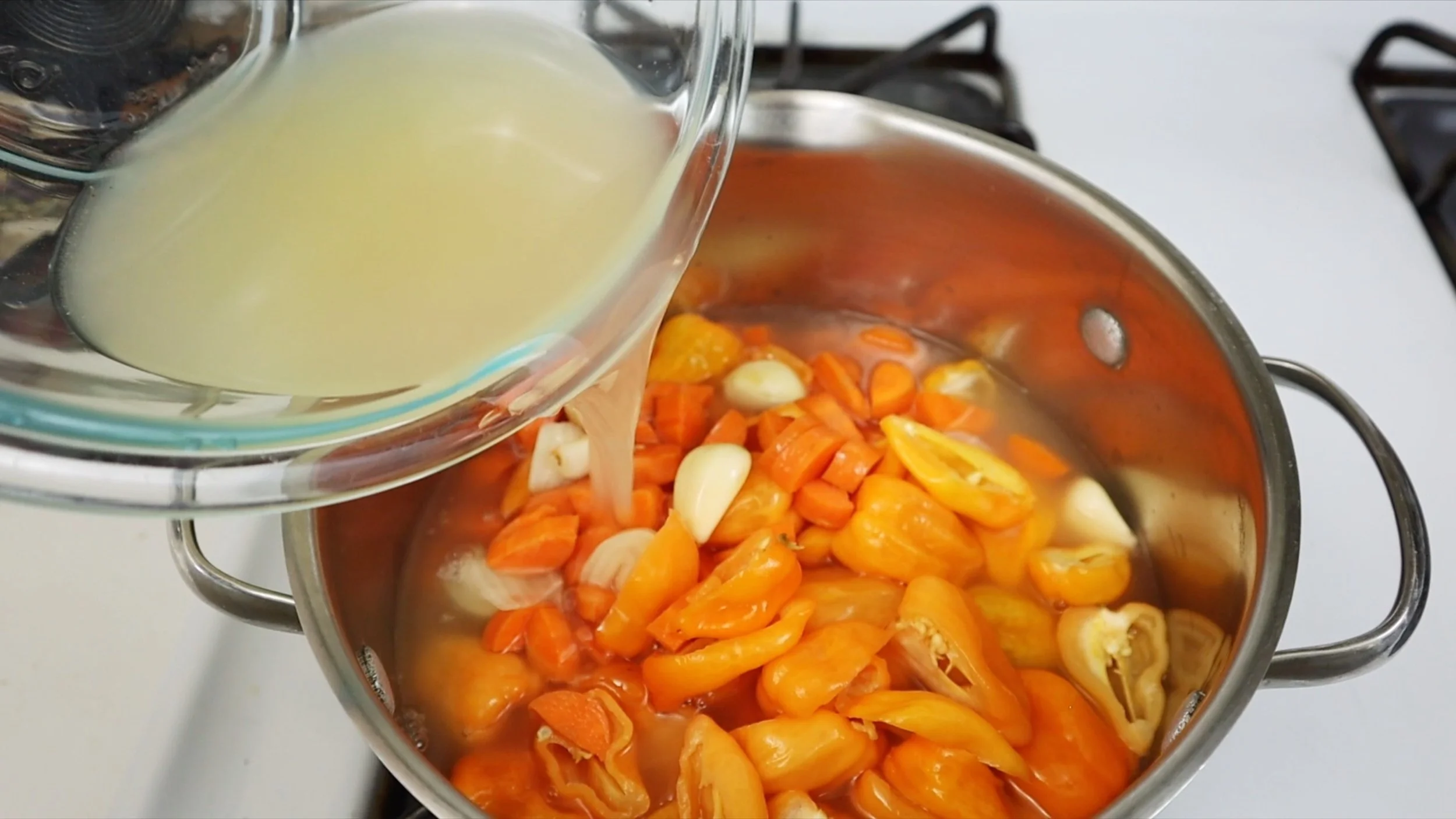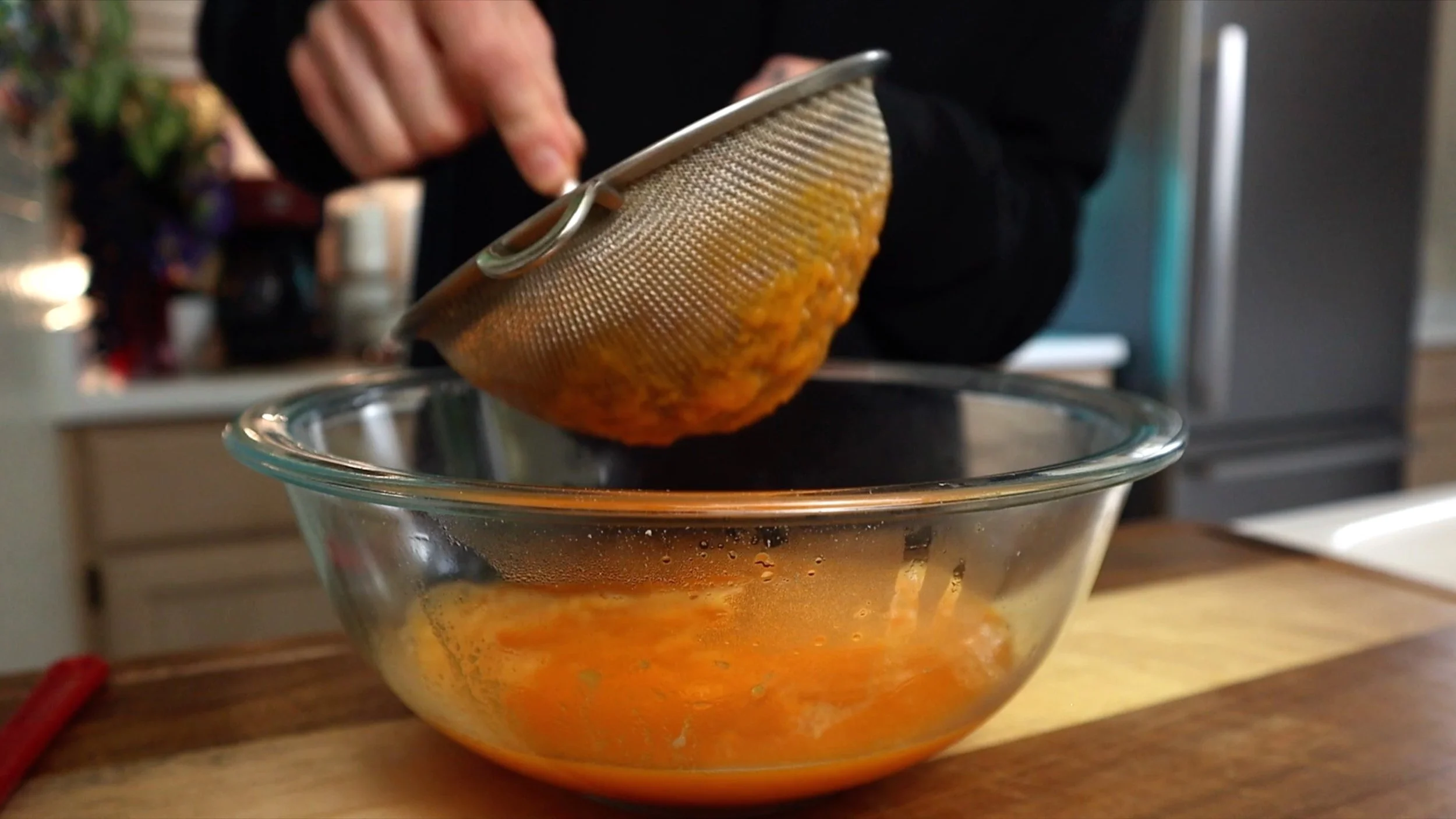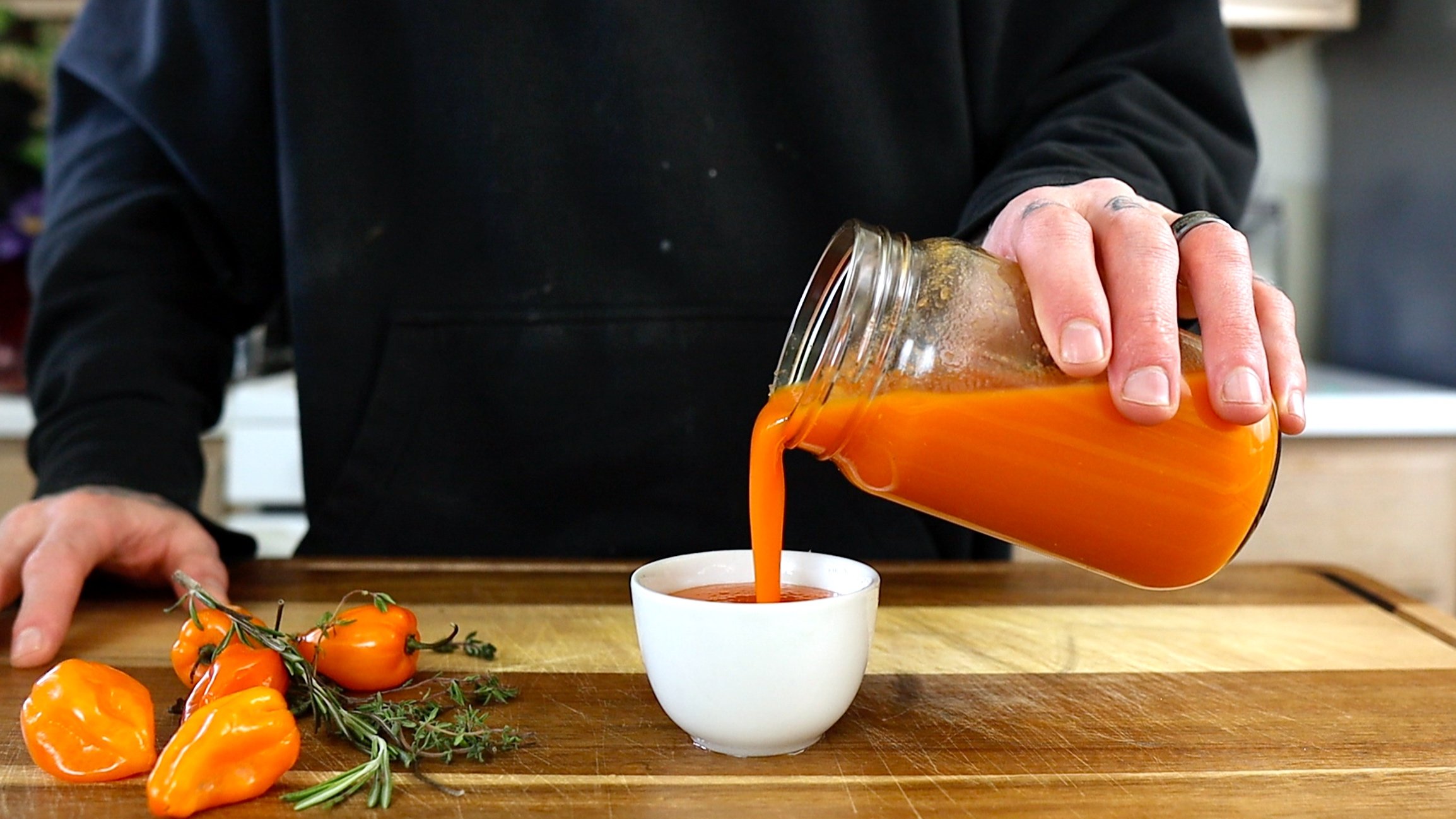Fermented Habanero Hot Sauce
Beautifully flavored fermented habanero hot sauce.
I love this sauce, regardless if I don’t really do spicy things. It has an fantastic flavor from the fermentation, it has some sweetness to it and I love the color. Simple hot sauce to make and well worth the wait it takes for the fermentation process complete. Makes some tasty chicken tenders. I will show two ways to make the sauce part. One way keeps the live active bacteria, another way does not. I make a sauce that I will sell in the future, therefor it needs to be cooked to kill ALL bacteria. Fully detailed below.
Ingredients:
25 habanero
2 whole carrots
4 garlic cloves
1 shallot
1 cinnamon stick
Filtered water or bottled spring water
Fine sea salt
1/2 c white wine vinegar
Tools needed:
Cutting board
Sharp knife
Rubber gloves
Scale that weighs in grams
Strainer
2 mason jars
Weight for ferment, I use a baby food jar. Ramekin or glass sauce dish works too
Sauce pot with lid
Immersion blender or high powered blender
Mixing bowl
Fine mesh strainer
Tongues
Rubber Spatula
Let’s make it:

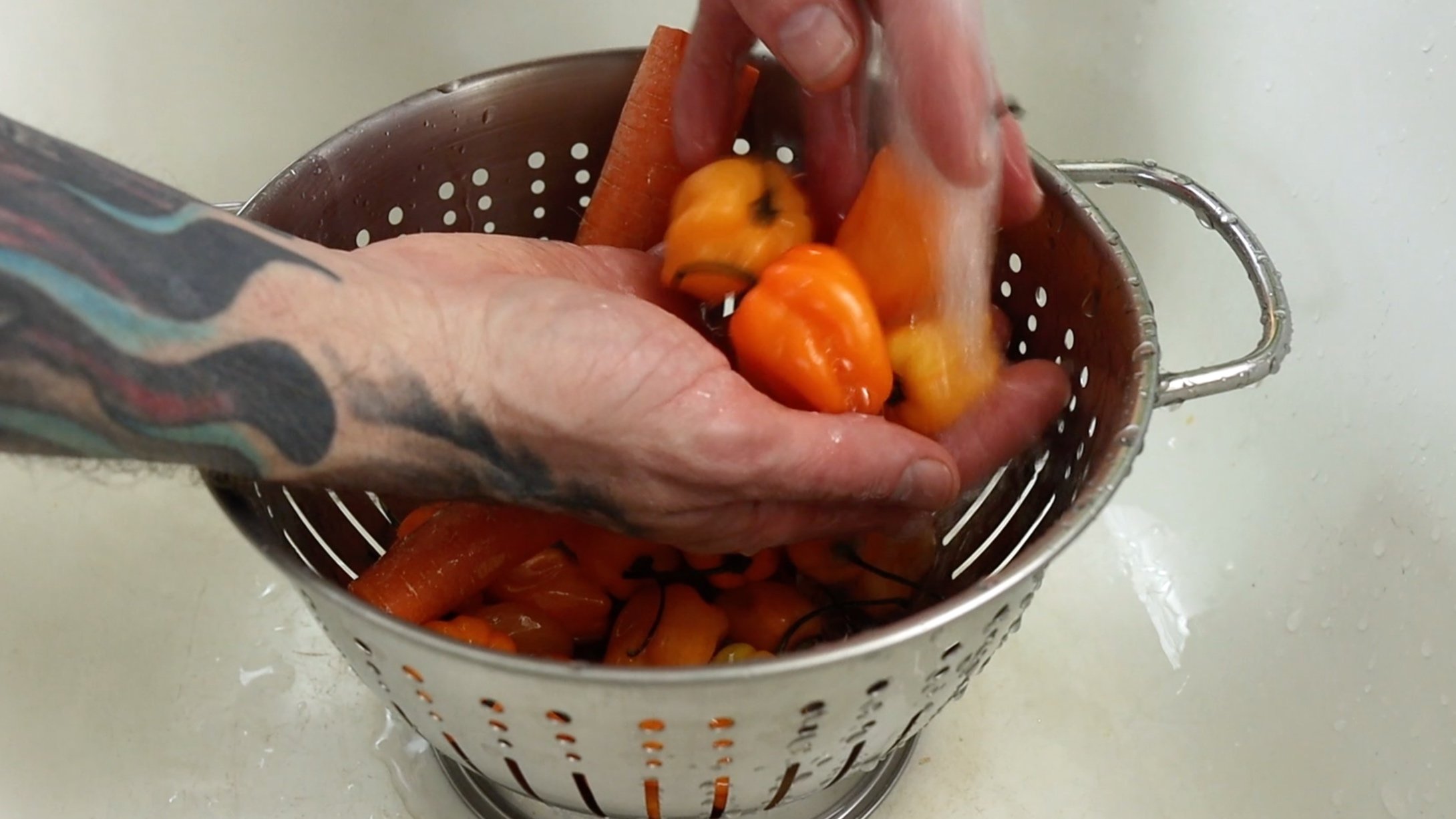
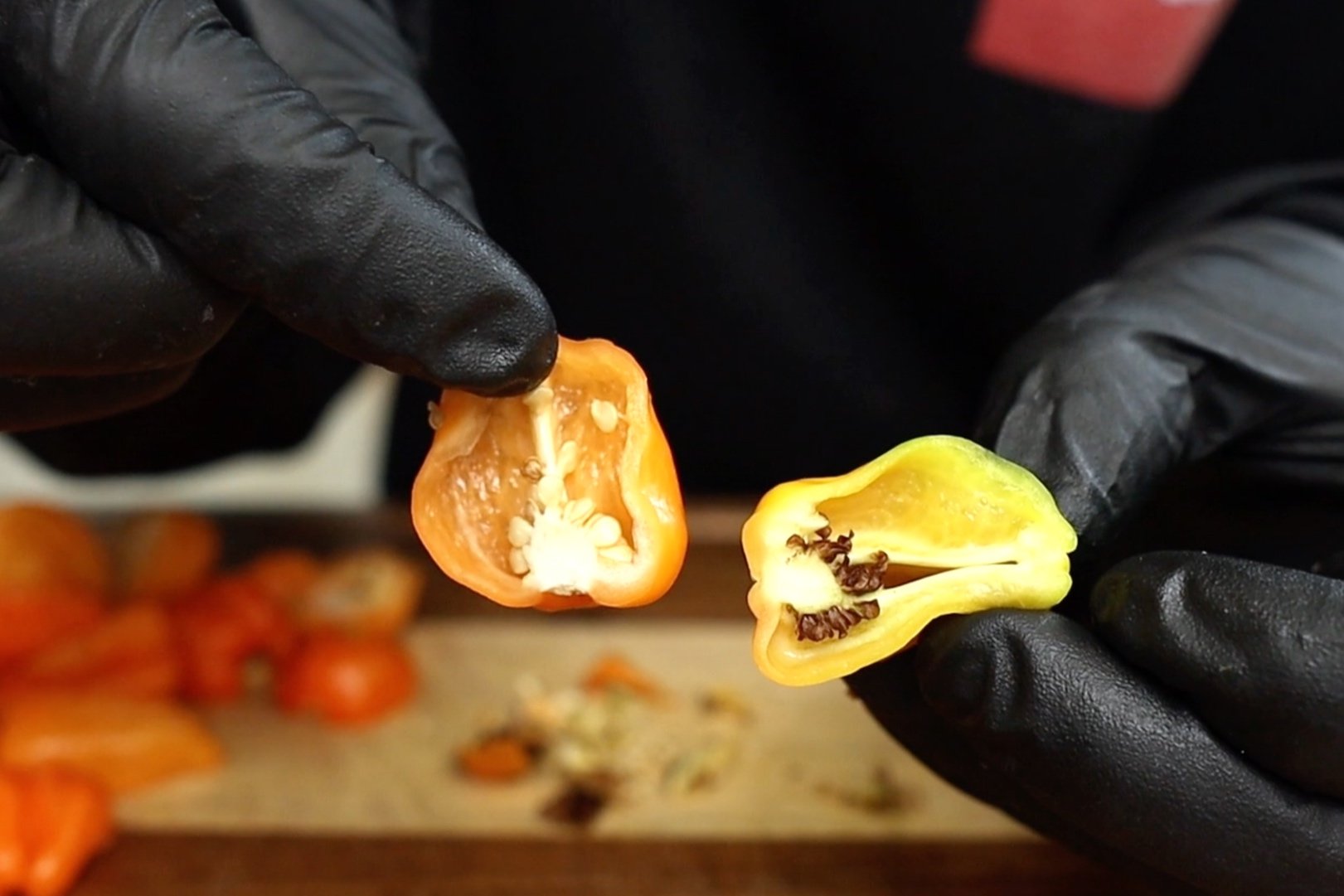
Wash jar thoroughly with hot, soapy water.
Wash habaneros, carrots, peel garlic and quarter shallots. Wash carrots and peppers well under cold running water. Optionally peel carrots. Make sure your hands, jars, cutting board, knife are all cleaned with hot soapy water.
Pull the stems off the peppers and cut habaneros in half. Inspect placenta and seeds for mold or dark seeds. Seeds are to be white when the peppers are fresh, dark seeds is a sign of peppers starting to age. The heat comes from the placenta in the pepper, not the seed. Cut carrots into 1/4 inch thick slices.
Habaneros getting added to mason jar on the scale to get weight.
Place jar on scale, zero out. Put peppers, carrots, garlic, shallots and cinnamon stick in the jar. Fill jar with filtered water to the neck of the jar. Add a drop or 2 of lemon juice. This helps get rid of chloramine that may be present in the water if using filtered. Record total weight and multiply the weight by 2.5%. This number is the amount of salt needed. In my example, the contents of the jar weighed to 839 grams.
Use the following calculation: 839 g x 2.5% = 20.975 g. I round the grams in salt up to 21 grams.
Fill jar with filtered water to get the weight of ingredients plus water. This will be calculated by 2.5% to get the weight needed for necessary amount of salt.
Water level is just at the neck level of the jar. Below shows jar with ingredients plus water on scale. Record that weight.
Pour water out into an empty mason jar. This will get put on the scale and have the calculated amount of salt added.
Add the measured amount of fine sea salt to the weighed out water amount.
Place the other empty jar on the scale, fill with the water using a mason jar lid to catch any ingredients from falling. Zero the scale out. Put in the salt until the scale reads 21 g. Put a lid on the jar and shake vigorously until the salt is fully dissolved. Pour that water back into the jar with the ingredients. Place weight in the jar to weigh the ingredients down. The ingredients must stay submerged in the water solution.
Shake jar with water vigorously to dissolve salt.
Put salt water solution back into the jar with the salt water solution.
I use a baby food jar to keep ingredients submerged. They must stay underneath the water level.
Let the jar sit in your pantry for 7 days up to 4 weeks (I have even gone as long as 6 months). You’ll see fermentation bubbles around day 2 or 3 and kahm yeast or pellicle may develop. This is a white film that develops on the surface of the water, much different than mold. It is harmless, but can give your sauce an undesired flavor. If it does form, scrape it off before making the sauce.
Let's make the hot sauce: First way kills the live active bacteria
Option 1: Kills the live active bacteria
Strain the contents of the jar, saving the brine. Discard the cinnamon stick. Warm up sauce pot and place the vinegar, jar contents and the water solution. Heat over medium high, bring to a simmer and cover with lid. Reduce heat and continue simmering for 15 minutes. The carrots and peppers need to be soft so they can be pureed.
Option 2: Keeps the live active bateria
Strain the contents of the jar, reserving the brine. Remove cinnamon stick and add contents to a high powered blender. Add half the brine to the blender, blend for 30 seconds adding more brine as needed to get a smooth sauce. The amount of brine you add determines how thin or thick you want your sauce. You can leave less brine to begin with and add as needed to blend into a smooth sauce. Strain if desired.
From the first example:
After the peppers and carrots are soft, blend the peppers, carrots, shallot and garlic until smooth and broken down. This will look pulpy at this point in time. Strain the seeds and pulp if desired. Cool and place in jars.
Finished hot sauce. Dip wings, carrots, put on burgers and burritos. Infinite uses for your fermented habanero hot sauce.
Your hot sauce is now ready to use. This will keep for months in your refrigerator. Check the pH of the sauce when it is at room temperature. It needs to be less than 4.6, my sauce was at 3.7. Technically shelf stable, however I prefer to store in mason jars with tight fitting lid in the refrigerator.
Enjoy!
-Logan

